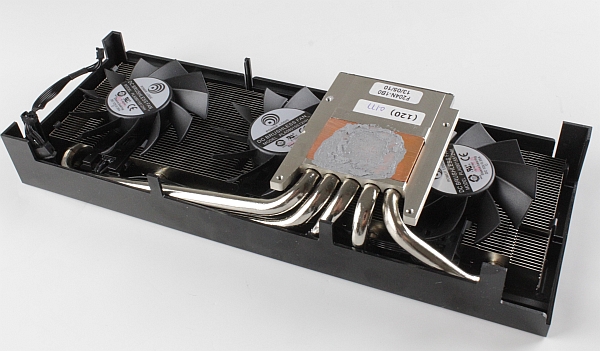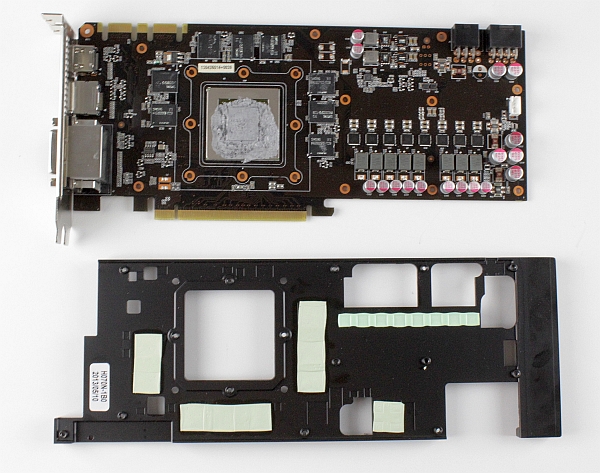Index
GTX 770's Phantom cooler is different from the one used on GTX 680/580 Phantom cards, although the cards may seem similar at a glance. The new cooler kept the 2.5 slot width. However, removing the shroud reveals that the new Phantom cooler uses three fans and a redesigned heatsink. Note that the GTX 580 Phantom used three fans, but the GTX 680/670 Phantom used two fans. It seems that Gainward decided three fans were a better combination with the redesigned heatsink. After all, the TDP difference between the GTX 680 and GTX 770 is 35W, which might explain the decision.
Now for the clever fan trick we mentioned earlier in the review. The fans can be easily removed much like hard drives from a hot swap unit. You just need to undo a single screw and yank the fan out. It is a very elegant approach. 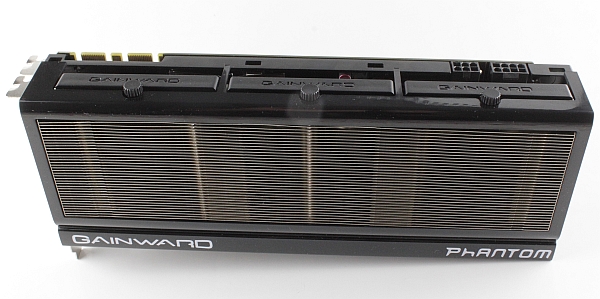
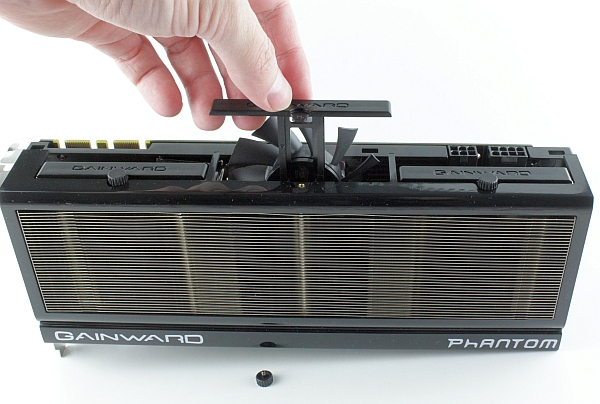
The trick is in the integrated power connector inside the bay. You can’t fit the fan upside down as it uses a set of rails to guide it down to the connector. Three fans and a tons of fins attract a lot of dust, hence we really like this approach, as it makes cleaning the heatsink much easier.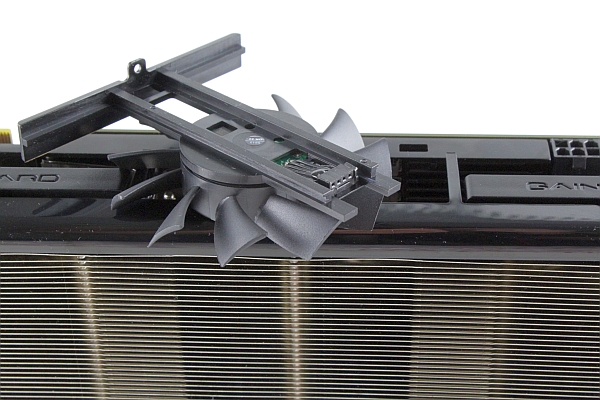
Gainward uses Power Logic PLA8015S12HH fans with a maximum RPM of about 3,500. The same Power Logic fan was used in the GTX 680/670/660 Phantom and GTX 580 Phantom cards.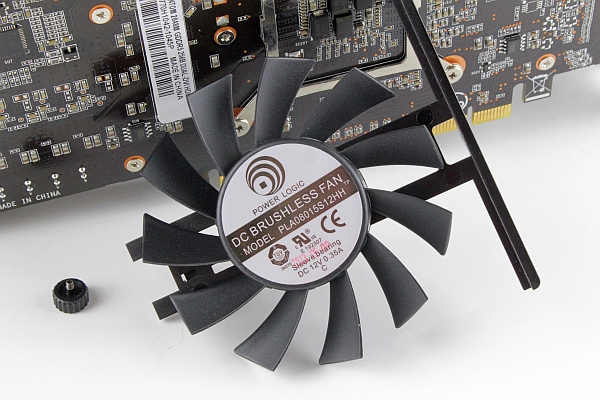
If you decide to take off a fan from most cards, it will void the warranty. On the Phantom it won’t, and it makes maintenance much easier. Removing the whole cooler from the card will be an easy task too, and could be done by removing four spring-loaded screws from the card’s back side, but this will void the warranty.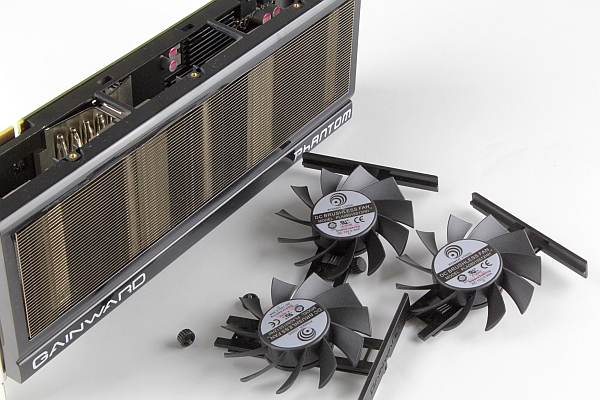
Judging by past experience, the loudness of the Power Logic fans depends on the efficiency of the heatsink. A well designed heatsink makes their life easier, and the decision to use three fans should result in more airflow at lower RPMs. Aside from the GPU, the fans are in charge of cooling hot components on the PCB too, and on a 230W card there is no shortage of those.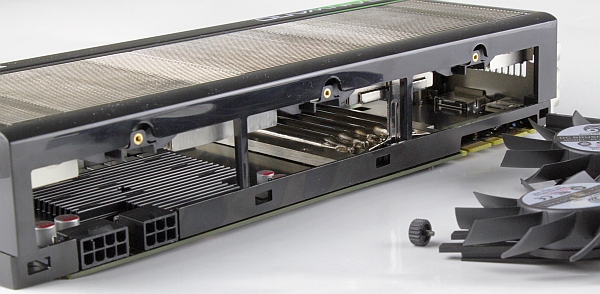
The next pictures shows how cable routing was implemented.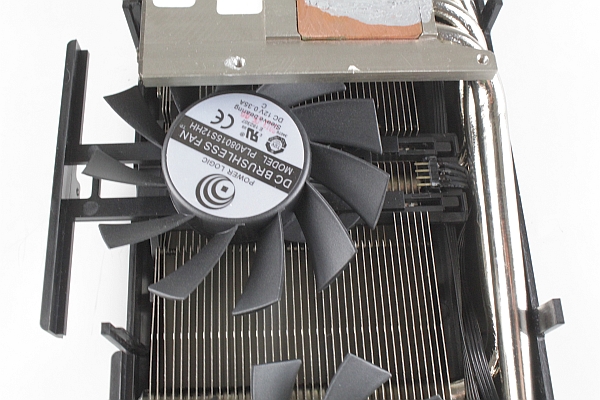
All three fans share the same 4-pin power connector. Setting the RPM manually is a breeze using Gainward’s ExperTool or any other popular utility like MSI Afterburner or PrecisionX.
New Phantom cooler employs a five-heatpipe system to transfer heat between the cooler base and the heatsink. The 8mm heatpipes are curved a bit better than in previous Phantom coolers, so they don’t protrude from the cooler at any point. The welds between heatpipes and aluminum fins are accurate and look like they’ve been done very well indeed.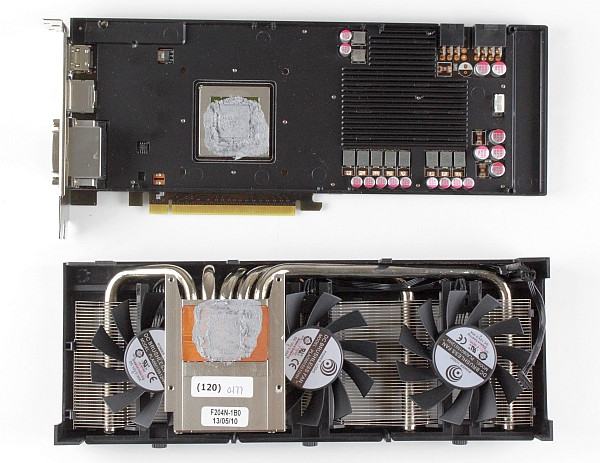
The GTX 670 Phantom did not feature a copper base, as it was made solely from aluminium. That was probably one of the main reasons it did not end up quieter than the reference GTX 670 cooler. Gainward went back to a copper base with the GTX 770, employing heatpipes to connect it to a massive array of fins.